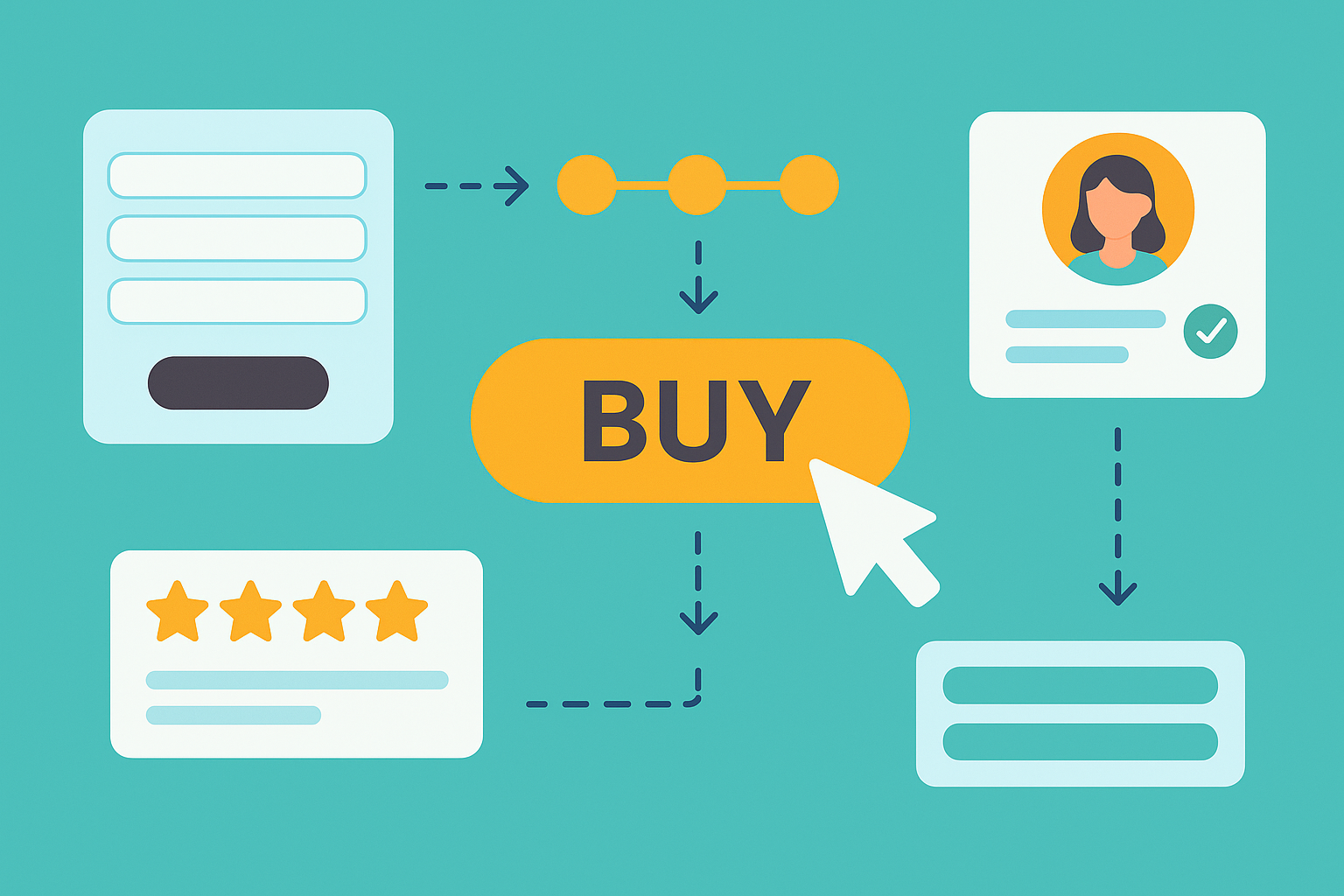
In the competitive digital landscape, the drive for higher conversions is relentless. However, many businesses fall into the trap of using aggressive, pushy tactics that, whilst they might offer a short-term win, ultimately erode user trust and damage brand reputation.
The most sustainable and effective path to boosting conversions lies not in manipulation, but in empathy. It’s about creating a superior User Experience (UX) that supports and guides users, making it easy and reassuring for them to achieve their goals. This article takes a deeper dive into the specific, ethical UX patterns that achieve this, exploring the psychological principles that make them work and drawing detailed examples from the playbooks of Airbnb, Stripe, and Shopify.
Before we explore the patterns, it's crucial to understand the line between ethical persuasion and "dark patterns."
Choosing supportive UX is not just an ethical decision; it's a strategic one that fosters long-term customer loyalty.
Forms are the final frontier for most conversions. This is where users commit, but it's also a major point of friction and abandonment. A guided form turns this potential obstacle into a smooth, satisfying final step.
The Psychology at Play:
Best Practices in Action:
Example: Stripe & Shopify
Stripe has built its entire business on optimising this moment. Their checkout forms are a masterclass in reducing friction. They automatically detect the card type (Visa, Mastercard, etc.) as the user types, use numeric keypads on mobile for card details, and their real-time validation is seamless.
Shopify provides its merchants with a checkout flow that embodies these principles. It offers guest checkout as standard and uses clear, logical sections for Information, Shipping, and Payment, often within a single, uncluttered page to minimise clicks.
For any multi-step process, uncertainty is the enemy. Users want to know where they are and how much effort is left. Progress indicators are the solution.
The Psychology at Play:
Best Practices in Action:
Shipping is better than Fulfilment Logistics.Example: Shopify
The classic Shopify checkout breadcrumb trail (Cart > Information > Shipping > Payment) is the perfect example. It's simple, universally understood, and effectively visualises the journey. It sets a clear expectation from the outset and reassures the user at every stage, making them far more likely to complete the purchase.
A Call-to-Action (CTA) button is the gateway to conversion. If a user has to scroll around to find the "Buy Now" or "Book" button, you risk them losing momentum or having second thoughts. A sticky CTA ensures the gateway is always open.
The Psychology at Play:
Best Practices in Action:
Example: Airbnb
Airbnb’s property pages are a brilliant case study. As you scroll down to read reviews, examine amenities, or view the map, the booking panel on the right-hand side often "sticks." This panel doesn't just contain the "Reserve" CTA; it also contains a dynamic summary of the price, dates, and number of guests. This masterful design allows the user to explore freely while keeping the option to convert—and the value proposition—constantly and conveniently in view.
The most sophisticated platforms rarely use these patterns in isolation. They layer them to create a powerful, persuasive, and trustworthy experience. Airbnb’s property page is the prime example of this synergy.
★★★★★ 4.92 | 145 reviews).This combination is incredibly effective. The social proof builds trust, the scarcity creates urgency, and the sticky CTA provides the immediate, frictionless path to act on those feelings.
Ultimately, high-converting design is human-centric design. It trades short-term tricks for long-term trust by creating experiences that are clear, supportive, and respectful of the user's time and attention.
By focusing on the psychology behind user actions and implementing ethical, proven patterns like guided forms, progress indicators, and sticky CTAs, you can create a digital experience that doesn't just sell—it serves. And in today's market, serving the user is the most reliable path to conversion.
Understanding these principles is the first step, but implementing them effectively to fit your specific audience and goals is where the real value lies. If you're ready to transform your user experience from simply functional to truly exceptional, our team is here to help. At TWDA, we specialise in crafting the intuitive, high-converting digital journeys your customers deserve. From auditing your current platform to implementing these powerful UX patterns, we help you build experiences that not only boost conversions but also foster genuine customer loyalty.



